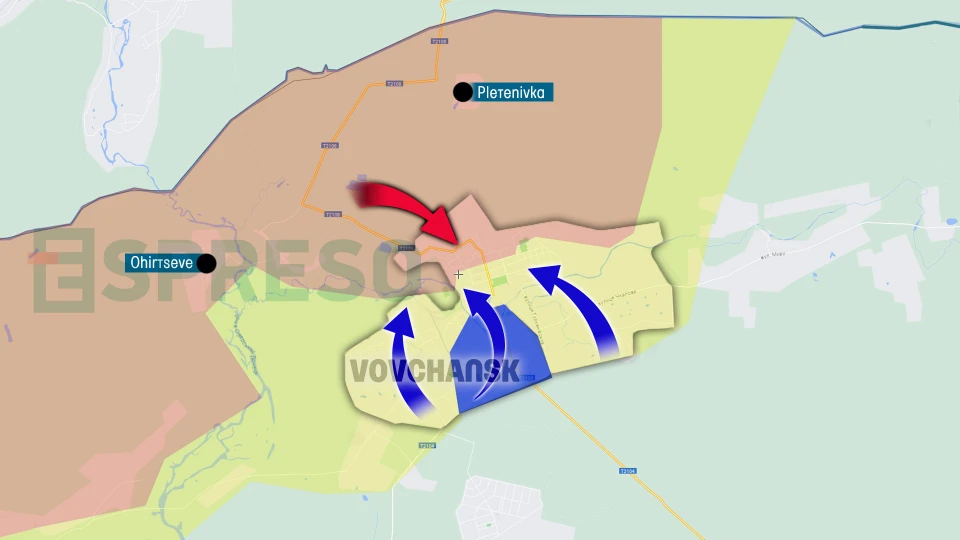
U.S. military aid package and Putin's new threats in response. Serhiy Zgurets' column
Recently, two significant military aid packages for Ukraine were announced. The United States declared an allocation of $375 million in military assistance
U.S. military aid packages for Ukraine
This is a package under the Presidential Drawdown Authority program, which allows Ukraine to receive equipment and components directly from U.S. Department of Defense arsenals. The weapons can be transferred to Ukraine quickly. The package includes air-to-ground missiles, ammunition for HIMARS, artillery shells, 190 M1117 armored personnel carriers, TOW missiles, Javelin systems, and AT-4 systems. These are urgently needed on the front lines and will enhance the mobility of mechanized brigades.
Previously, air-to-ground munitions had not been transferred, leading to debate among experts about whether this referred to AGM-158 cruise missiles for the F-16 or another type, like the AGM-154 glide bombs. U.S. President Joe Biden clarified that to enhance Ukraine's long-range strike capabilities, he decided to transfer the AGM-154 JSOW munitions.
The AGM-154 JSOW is indeed a highly accurate, low-observable gliding bomb, capable of striking targets up to 130 km away when released from an altitude of 8 km. However, Ukrainian pilots are currently flying at lower altitudes to avoid Russian air defenses, which limits the effective range of the weapon to about 20-40 km from those heights. This means the assessment of the weapon's capabilities may be somewhat exaggerated. However, there is an interesting nuance regarding its use in combat situations. It turns out that this glide bomb can actually be a missile if a jet engine is adapted to it. Such tests have been carried out, and it is possible that Ukraine itself could use the modification of this gliding bomb into a missile format. In this case, such a bomb could fly at a distance of 500 kilometers.
The United States has a stockpile of about 3,000 of these bombs, and it is likely that this prospect of increasing capabilities by upgrading this bomb into a missile will allow the Americans to avoid being accused of overstretching Ukrainian capabilities.
In the second package, the U.S. allocated nearly $8 billion for weapons for Ukraine. These funds were at risk of expiring due to the U.S. fiscal year ending on October 1, and the $5.4 billion under the president's authority to transfer weapons could have been lost. However, this authority has been extended for the next period. While it is unclear how these $5.4 billion packages will be replenished, the funds will not be lost. This is a positive signal for Ukraine's European partners and for the U.S. itself, showing that America will continue to support Ukraine in its war with Russia.
Interestingly, the aid packages announced today for the first time include the wording that the weapons are being provided with the goal of enabling Ukraine to achieve victory on the battlefield. Previously, military aid packages were transferred with references to meeting urgent needs for repelling Russian aggression. This shift in language marks a notable change in the intent and objective behind the aid.
The second aid package also includes initiatives related to the transfer of a new Patriot battery, which will be repaired, upgraded, and delivered to Ukraine. This has been a long-standing goal for the Ukrainian side. Additionally, the number of F-16 pilots to be trained by the U.S. will increase, with 18 pilots set to be prepared next year. The package also includes the provision of a corresponding number of missiles for the Patriot systems and other air defense systems, funded by contracts to be executed by the U.S. defense industry. These contracts, worth $2.4 billion, are part of the overall $8 billion aid package.
Putin's threats with nuclear weapons
Russia is once again attempting to intimidate the United States and European partners by altering its nuclear doctrine. On September 25, Russia's permanent security council held a meeting on nuclear deterrence, expanding the list of threats and conditions under which it may use nuclear weapons. They stated that an attack on the Russian Federation, involving not only strategic but also tactical aviation, cruise missiles, or drones—regardless of whether the attacking country is nuclear if it is allied with a nuclear power—could serve as a pretext for Russia to use nuclear weapons. This is a direct attempt to dissuade partners from increasing their support for Ukraine, signaling that Russia could deploy tactical nuclear weapons at any moment.
The threats were issued specifically during the visit of the Ukrainian delegation in Washington, where discussions focused on military aid packages and the potential lifting of the ban on using weapons for strikes deep into Russian territory. This is widely understood to be an ideologically political maneuver by Russia, lacking any real substance.
Ukrainian drones will continue to target Russian military airfields, bases, arsenals, and missile warning systems, as this effort is aimed at diminishing Russia's offensive capabilities and aligns with the overall war strategy.
Frontline situation
Oles Maliarevych, deputy commander of the ACHILLES battalion of the 92nd separate assault brigade, shared insights about the current situation at the frontline, where his brigade and unit are holding the line.
“Our division is currently operating in three areas: Hlyboke - Lyptsi, Vovchansk, and Kupyansk, with the majority of our forces in Kupyansk, where the situation is particularly intense. We were redeployed there a few weeks ago, and initially, discussing it was prohibited. We are actively working to prevent the Russians from reaching the left bank of the Oskil River near Kruhliakivka, which can be seen on DeepState OSINT project's maps,” Maliarevych stated.
According to him, Russian troops keep fighting every day. Fifty Russian tanks and armored vehicles are currently assaulting Kruhliakivka. Ukrainian soldiers are holding back the Russian ironclad attack.
“The battle has been ongoing since the night before. Honestly, I've never witnessed such a massive armored attack as the one happening today. The Russians have sent 51 units of equipment to storm our positions. Currently, the enemy is partially defeated and has not achieved any territorial success, but the battle continues. Everyone is holding their positions, and several units and brigades are working together,” Maliarevych reported.

Regardless of the situation on the front line, the units always maintain a full arsenal necessary to repel any attack and sustain operations for the designated period. Even during relatively quiet conditions, they ensure a sufficient number of drones are available in case the situation changes drastically. The quality and quantity of work from these units are vital, as they directly affect the lives of the infantry holding positions on the ground.
FPV drones application
The use of FPV drones has significantly increased and continues to rise, according to Maliarevych. "The sizes of FPV drones are growing. However, in situations involving very close contact, where there’s no need to fly distances of 20 km, 15 km, or 12 km, we use smaller 7-inch or even 8-inch FPVs instead of the larger 9-10 inch models, which have somewhat weaker batteries. The ammunition is also changing and improving, with evolving technologies. Each unit now has its own R&D centers, where personnel are developing new solutions to ensure that drones operate more effectively, evade enemy electronic warfare, and fly in any weather. Technologies are constantly being refined.
Every drone that arrives, even from trusted suppliers, requires some time for verification to ensure that everything is as stated and that the battery is correctly manufactured. After that, the drone is tested at the testing ground. It undergoes several short-duration operations there, and only then is it allowed to be used on the front line. There have been cases where, for example, a British fund wanted to transfer 300 drones and did so, but they decided to source them from suppliers who were just starting out, making them in garages. Unfortunately, out of that batch, 140 out of 300 drones were completely unfit for flight. We simply dismantled them, keeping only 2; even the motors were non-functional. Such things happen, unfortunately. This is our job. But we already know what to look for and who truly delivers quality on the market," he said.
Drones with fiber optics
Maliarevych noted that drones with fiber optics can be used at very short distances, as everything depends on the terrain. They do not dismiss this technology and are prepared to deploy it when it becomes truly necessary. In particular, when there is complete electronic suppression, this technology will need to be utilized.
"Fiber optics refer to a wire that extends behind the drone over a certain distance, transmitting a signal that cannot be jammed, only cut. We also use other solutions, of course. We utilize everything that works, and when we see that something is no longer effective, we change it. However, each operation or task has its own range of solutions," he added.
Maliarevych mentioned that the battalion is now fully staffed and has no vacancies, as one would say in civilian life. They have a reserve of 1,000 people who are ready to be called up to the military, specifically to their unit, when they expand. They have conducted video interviews with each candidate and have this reserve ready. When a decision is made regarding the increase, they will reach out to these individuals. They are also inviting anyone who is considering joining the military to come forward.
- News













































